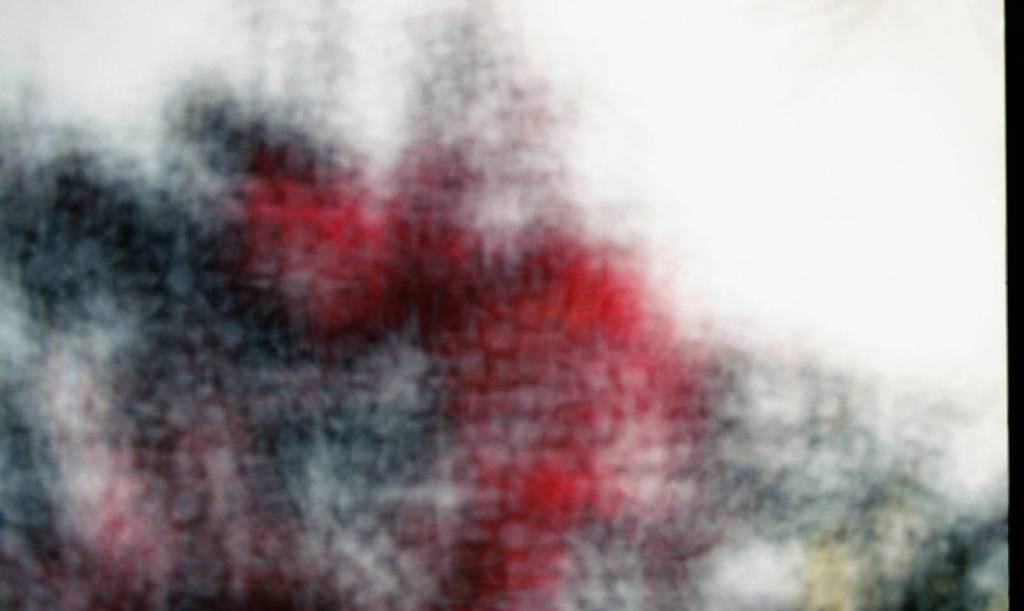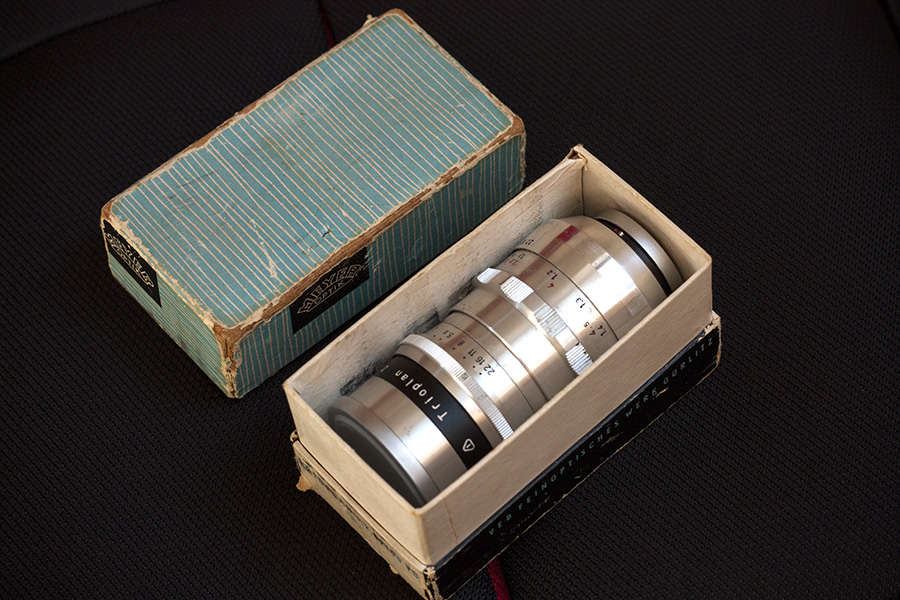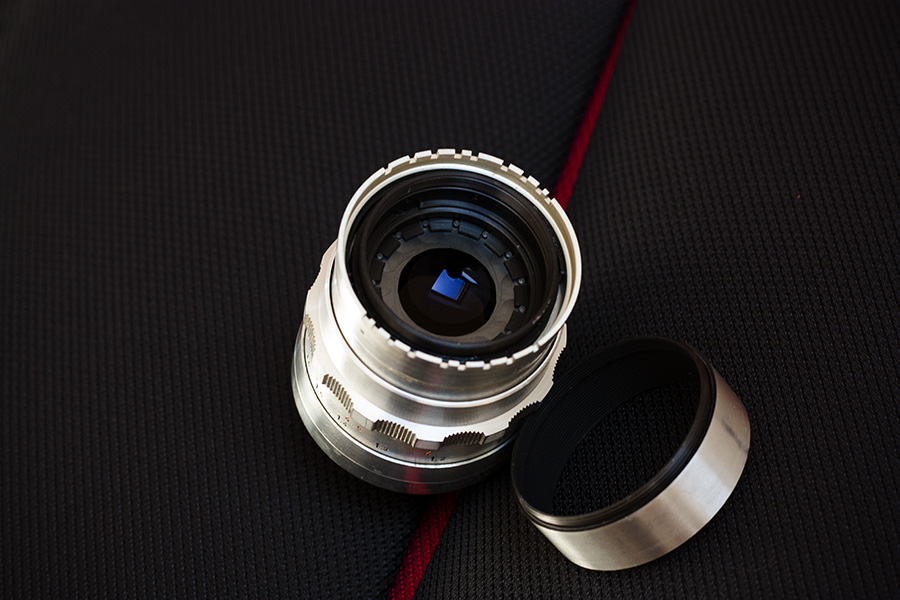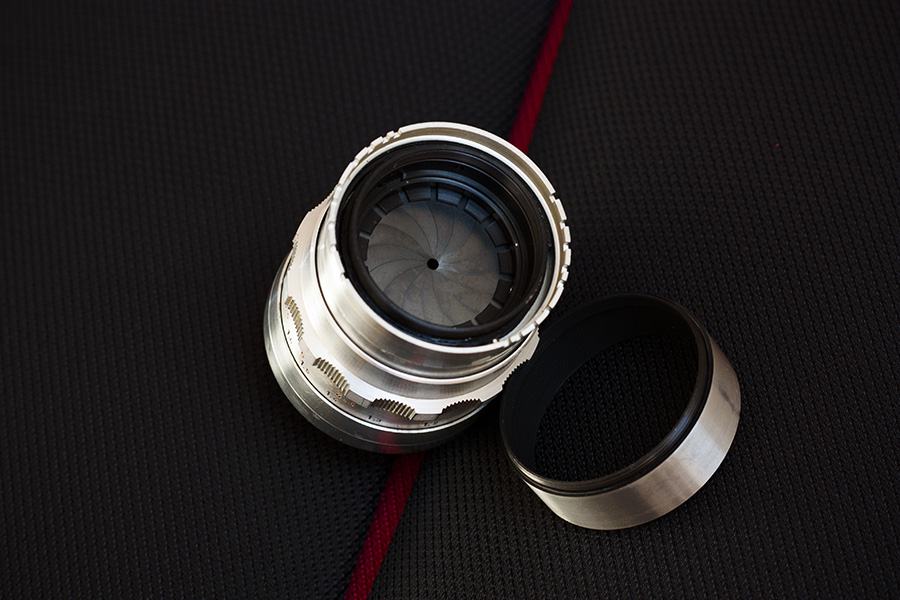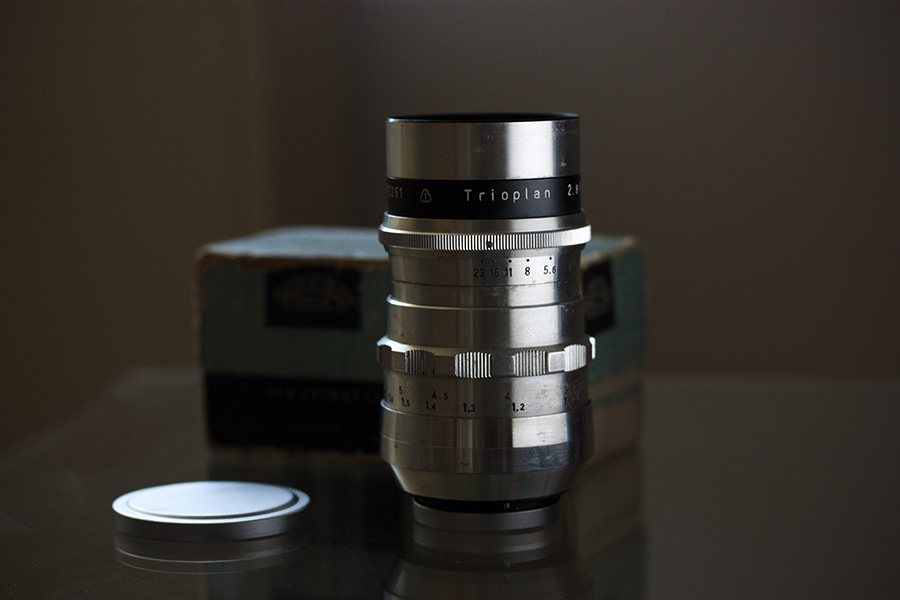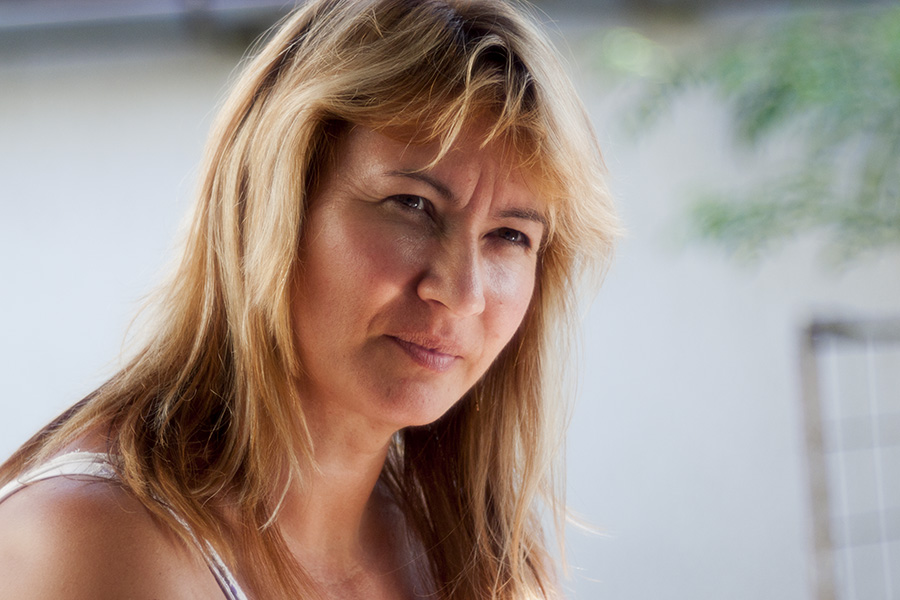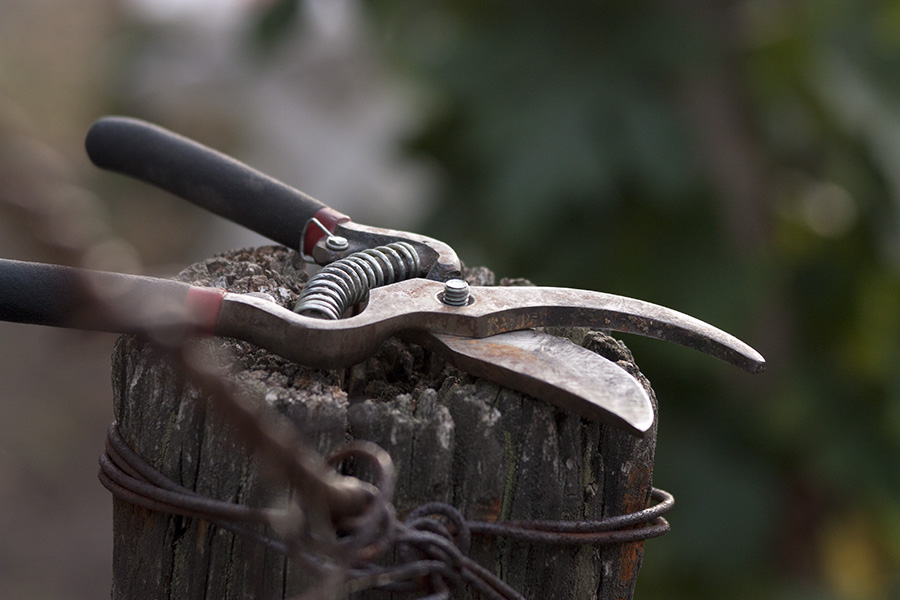This article was a very long time in the pipeline. For one reason or another I always postponed it even though I promised to Thomas (who kindly lend me this lens) to write my opinion about it. It might be that I don’t really write about gear which I don’t particularly in love with.
The controversy
I have a love/meh relationship with Lomography. There are products which I absolutely love such as the LomoGraflock 4×5 Instax back and some of their film stocks. In general I am really happy that they are there, form a community and bring more diverse options to photography.
But on the other hand I am not interested in funky plastic toy like gear like Holgas. I totally get why they appeal to a lot of people, it is just not my cup of tea. And also I am outright allergic to cringy marketing.
The Achromat lens while being made of glass and metal by its very nature leans into the lo-fi category to me especially with the creatively shaped aperture inserts.
As for why the cringy marketing nerve was pushed for me? The massive decorative text on the barrel of the lens:
Daguerreotype Achromat
by Chevalier
a Paris 1839
Achromat simply means that the lens is designed to focus two colors at the same point exactly.
While this is true that such a lens design was used on the official Daguerreotype cameras in 1839, and that lens was created by Charles Chevalier, this lens is a very far relative to the original one.
image by liudmilanelson1x1 (Image rights)
The original lens while had the same amount of lens elements and the placement of the aperture was similar was a very different beast. It had a much bigger image circle, the lens elements had different shapes and it was a lot slower. It was also nicknamed as the landscape lens.

In the end, I decided to give Lomography a break on this though as they clearly say that the lens is an Achromat inspired by the original design of Chevalier which is not wrong.
I had to reevaluate my feelings after I realized that the naming of the Lomo Petzval lens did not bother me at all. Could be that my judgment is tainted by the how much I actually like that lens….
So I had some baggage to unpack and process before I have even held the lens in my hands.
But let’s see how my opinion shifted after actually using the lens.
My setup
I used my mirrorless digital camera (Fujifilm XT2) with the Achromat. Initially I tested a simple adapter which allows mounting of Canon EOS mount lenses to my Fuji X camera. But because I wanted to experience as much of the image circle with all the lens character that comes with it, I decided to use my EOS to X focal length reducer aka speed-booster.

This setup allowed me to play with the lens very comfortably. Using a mirrorless digital camera means that I could stop down the lens while being able to still see a clear image in the viewfinder as the camera compensates for the darker lens by boosting the signal. Focus peaking and punch in focus was also really useful.
The speed-booster helped to combat the crop factor and made the lens a stop brighter while supposedly should not had made any change on the way the lens rendered.
The best setup would had been a native full frame camera with Live view + focus peaking and in body image stabilization. Of course any other setup would be fine including EOS film bodies, though the viewfinder can get really dark once stopped down to any usable aperture.


Image quality
The image quality of this lens is certainly a mixed bag. Wide open it is simply terrible, soft and full with all kinds of aberrations. There is no big surprise there, this is after all one of the simplest lens design imaginable.

Barabás János-Dr. Gróh Gyula: A fényképezés kézikönyve 1956
What is quite interesting though is how much things improve by stopping down. Around f8 the images are kind of OK, but certainly usable with a touch of character.
It really is crazy how much can be achieved by such a primitive optical formula if moderate apertures are acceptable for the photographer.
Sharpness
Let’s not talk about it. From f11, it is usable. This is not a lens for critical high resolution use cases.


Flares
The lens is not particularly prone to flaring. Less glass-air surfaces means there are less opportunities for internal reflections. Still, it is possible to throw some rainbow flares into the mix. I am not sure if it has anything to do with the lens, the UV filter I used or perhaps the speedbooster played a role.



Bokeh
An aspect which I like is the bokeh. The fewer glass elements also means that the background blur is really soft without onion rings, or any other madness produced by complex modern aspherical lenses. Especially in close focus scenarios the bokeh is really pleasing indeed.




I have not played too much with the different non spherical aperture inserts. I am sure they could be fun, but I was more focused on the “normal” image quality.


Conclusion
Without a doubt the Achromat is a special lens. It looks apart both from the distance and the images it produces are also recognizable. It is for sure a good conversation starter which can be very useful for street photography.

The lens is well built, no plastic involved and stopping down improves on the image quality dramatically which makes it usable as a normal lens. It is manual focus only, but on a mirrorless camera, nailing focus is not very hard.
Otherwise you can embrace the pictorial nature of the lens which is again something that stands out from the crowd.

All in all, I think Lomography has achieved what they set out to do with this lens and I it has it’s audience. Am I part of this audience? Not really. While interesting, this lens is not something I would buy. In addition, the fact that I can borrow this lens from a friend any time I need it for a project also eases my urge to get one. I will probably try it again on film in the future.
It definitely raised my curiosity towards other Lomo lenses in the lineup such as the Petzval with it’s crazy swirly bokeh. Hopefully it will take less time to put together an article about that lens.

A second opinion
In order to get a more well rounded review, I have asked Thomas (the proud owner of the Achromat), to share some of his photos taken with this lens.
So far I only have the pictures and I know that he used a mid range film EOS body to take them. I may update the post with more details regarding film stock and maybe even with his thoughts about the lens.

I really like this portrait. Even though it is very soft, potentially even out of focus, it successfully captures an expression.

The funny highlights in the bokeh are not obvious upon first inspection, but they provide enough eye candy to move the viewers attention from the subject on a longer look. I think this gives a bit extra kick to this image. It is already a killer shot as it depicts a Cannonet camera.
These abstract photographs are part of a four seasons series. Though to me a bit too far gone, it is hard to argue that they are unique. I have to admit that as a series they kind of work. These ones were shot on Kodak Ektar 100 using the Aquarelle Plates f6.3.

And finally a psychedelic one. Not sure what is going on with the colors, but I can imagine that temperature control was deliberately sabotaged by Thomas during development for artistic effect. I would certainly consider this lens to produce cover art for goa trance albums.
You can find the work of Thomas here.
If I get more context or photos with this lens, I will update the article and I hope that you enjoyed this second set of pictures as much I did. If so, please drop a comment.
Further reading
If you like the Achromat design, I have an article about an old Hungarian box camera called Pajtas here. In case you were interested what can be achieved by a lens design with just 1 extra lens element, check out the article about a Trioplan.
Some other useful links:



